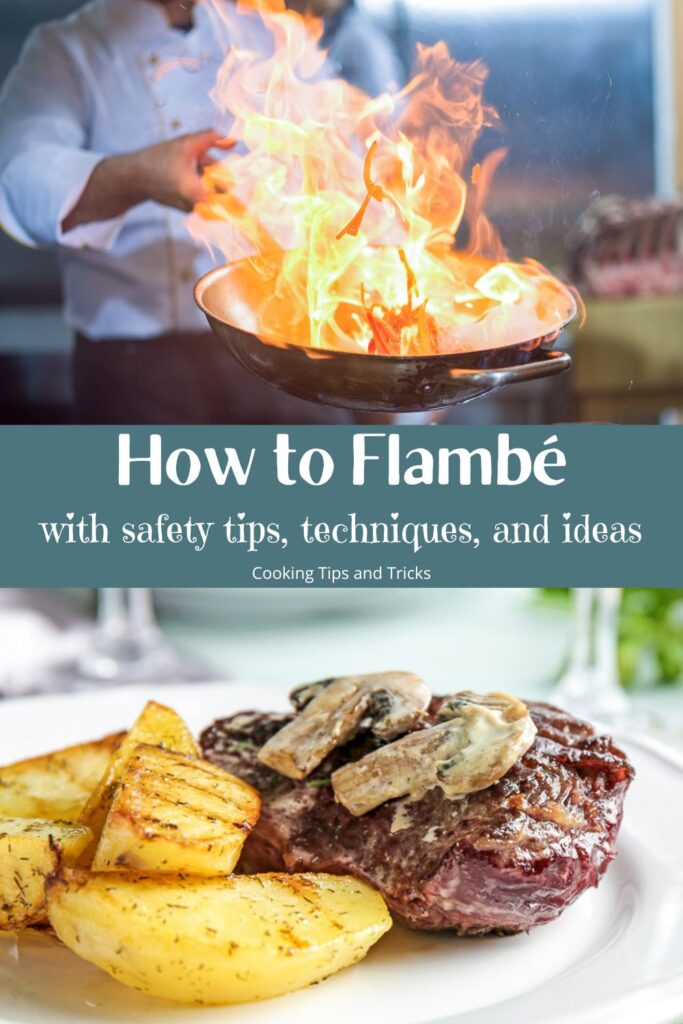Safe and Delicious Flambé
Flambé is a captivating culinary technique that adds a touch of drama and depth to your cooking. This article examines the art of flambé, its history, safety measures, essential equipment, and recommended alcohols to use. We’ll also cover a delectable array of flambéed dishes, ranging from sweet to succulent, to enhance your special occasions.
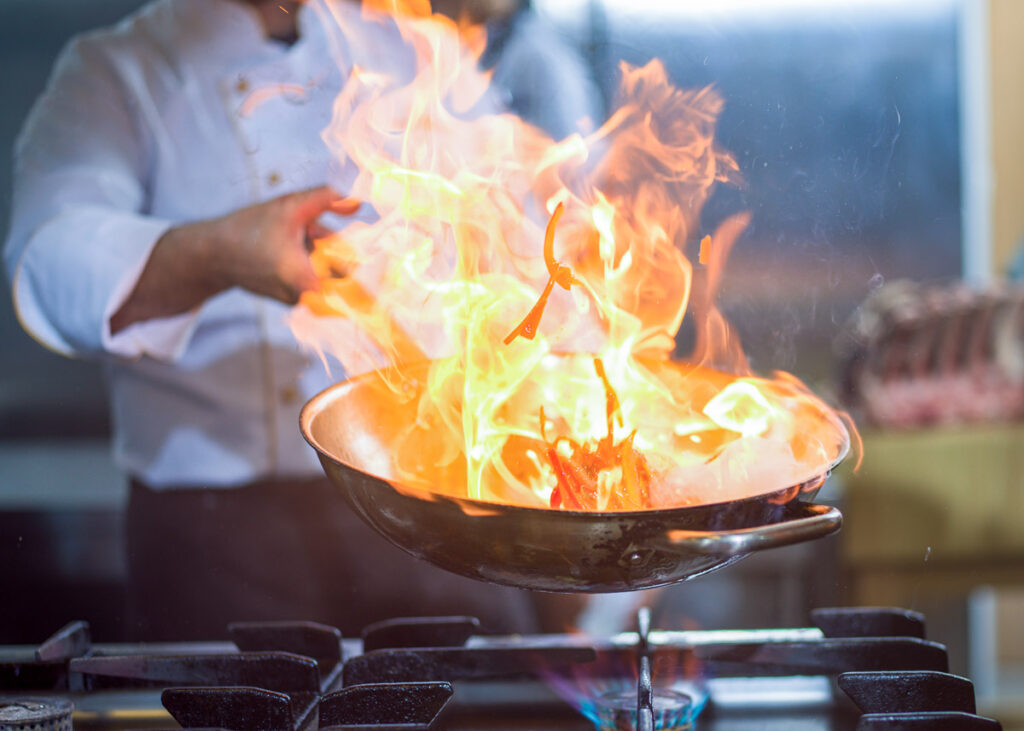
Flambé safety
Safety is the most important part of working with open flames in the kitchen. Here are some essential tips:
- Keep a lid handy: Having a lid nearby allows you to extinguish the flames quickly if they get out of control.
- Use long kitchen matches: These are safer than standard matches and keep your hands farther from the flames.
- Avoid pouring alcohol directly: Never pour alcohol directly from the bottle into a hot pan; this can lead to flare-ups. Use a measuring cup to add the alcohol.
- Work in a well-ventilated area: Ensure good ventilation to dissipate alcohol fumes.
- Avoid loose clothing and hair: Tie back long hair and wear close-fitting clothing to reduce the risk of accidents.
- Stay sober: Only a sober and responsible cook should flambé.
A fiery cooking technique
Flambé is a cooking method that involves briefly igniting alcohol in a hot pan to create a dramatic burst of flames. Beyond the visual spectacle, flambé enhances flavors, giving dishes a unique and nuanced taste.
Flaming food for flavor and presentation
The use of alcohol in cooking dates back centuries, with flambé taking it to new heights. As the alcohol ignites, it burns off the rawness, leaving behind a mellower, more complex flavor profile. Additionally, the spectacular flames enhance the dining atmosphere, making flambé perfect for special occasions and restaurant-style presentations.
Types of flambéed dishes
Flambé embraces a diverse range of dishes, both sweet and savory:
Iconic flambéed fruits:
- Bananas Foster: Sliced bananas caramelized in a buttery brown sugar and rum sauce.
- Cherries jubilee: Cherries cooked in a sweet cherry brandy and flambéed for a delightful show.
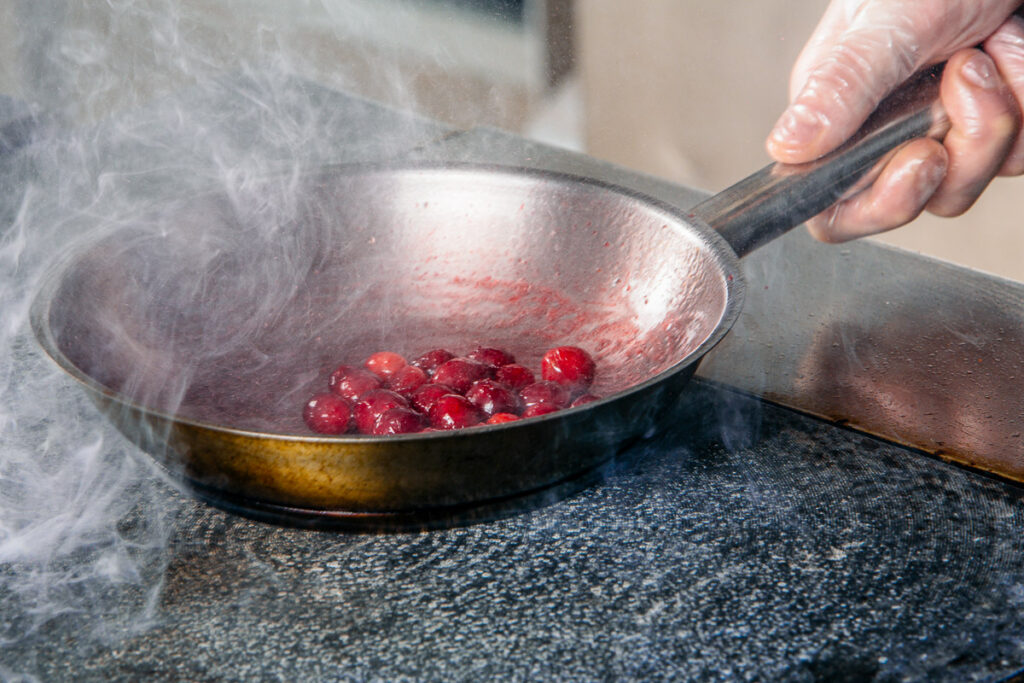
Other Desserts:
- Crepes Suzette: Thin pancakes flambéed in an orange-flavored Grand Marnier sauce.
- Baked Alaska: A show-stopping dessert with cake, ice cream, and meringue, flambéed to golden perfection.
- Peach melba: Peaches served with raspberry sauce and flambéed with brandy for a fruity explosion.
- Peaches flambé: Fresh peaches flambéed with brandy or rum for a quick and elegant dessert.
- Strawberries Romanoff: Simple preparation with readily available ingredients, perfect for a romantic occasion.
- Pears belle Hélène: Easy poached pears topped with ice cream and flambéed with brandy or other liqueur.
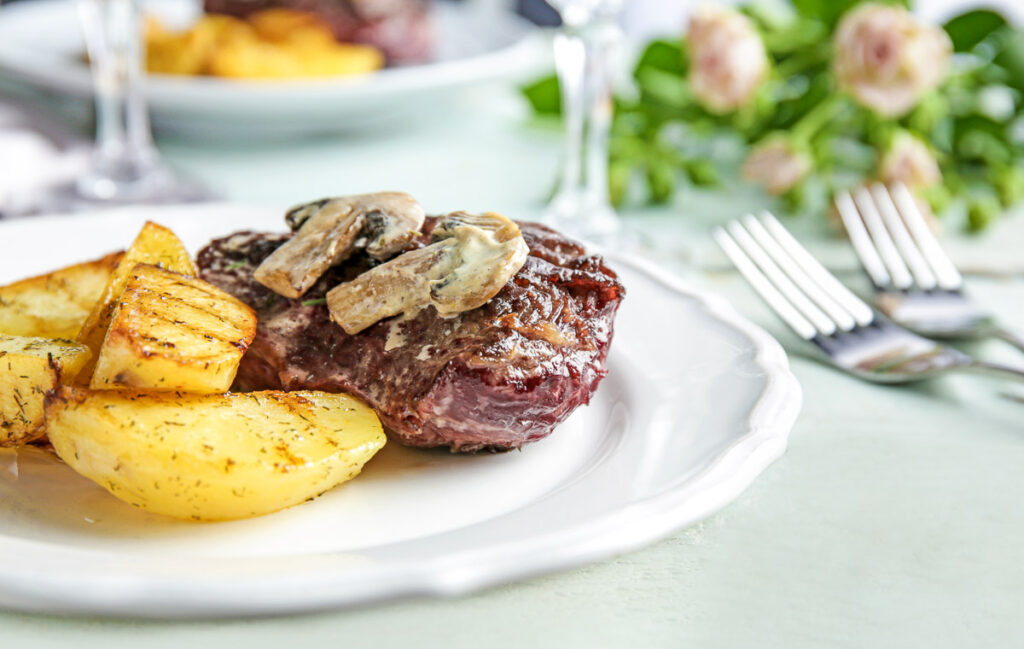
Meat and seafood
- Steak Diane: Pan-seared steak in a rich mushroom and brandy sauce, ignited to create a flavorful finish.
- Shrimp or scallop flambé: The seafood is first sautéed with butter and garlic and then flambéed with brandy or another alcohol.
- Lobster flambé: A whole lobster is cooked and then flambéed in its shell, where it is caramelized on the outside but the inside is tender and juicy.
Drinks
- Flaming coffee: Coffee with a splash of brandy or rum, ignited to create a warm, boozy beverage.
- Irish coffee flambe: A blend of hot coffee, Irish whiskey, sugar, and topped with whipped cream, often flambéed for a caramelized finish.
- Café brûlot: A dessert coffee that is often flambéed. It is a classic New Orleans-style coffee prepared with brandy or cognac and typically served as a dramatic finale to a special meal. The coffee is traditionally made at the table, where a mixture of brandy, orange liqueur, and spices is heated and ignited, creating impressive flames. These flames not only enhance the flavor of the coffee but also add to the overall presentation and beauty. Café Brûlot is known for its theatrical preparation, making it a delightful and memorable dessert option.
Appetizers
- Saganaki: A classic Greek dish featuring a slab of cheese (usually Kasseri or kefalotyri) fried until golden and served with a squeeze of lemon.
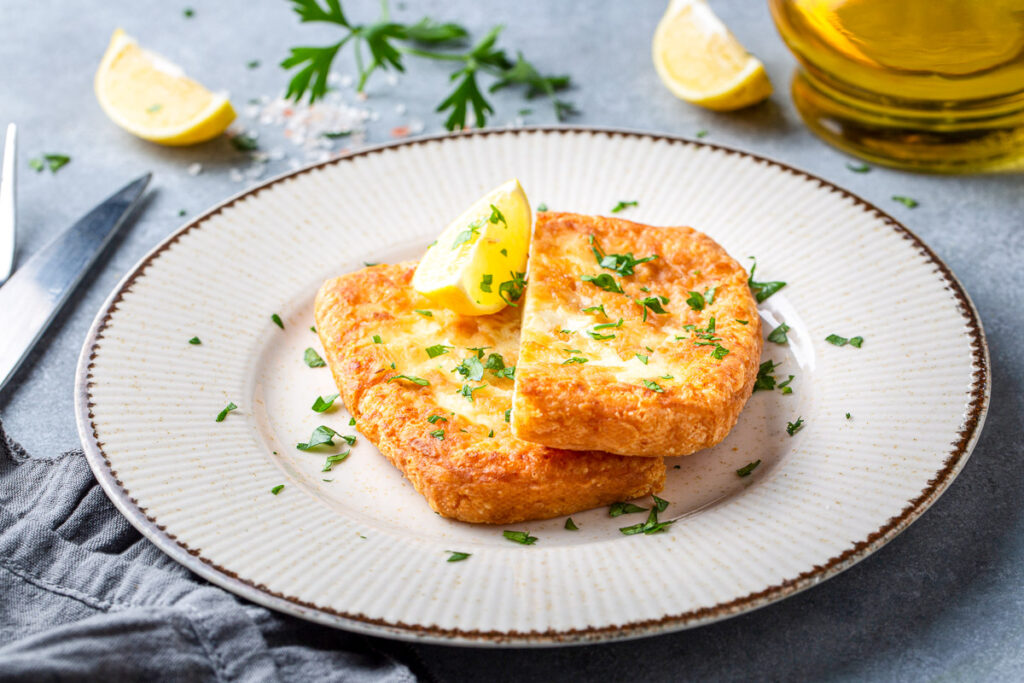
How to flambé: A step-by-step guide
Flambéing can appear intimidating, but with the right technique and safety precautions, you can master it. Here’s a simple guide:
- Choose the right pan: Choose a wide, shallow pan with low sides, like a sauté pan or skillet, to ensure even heat distribution and prevent flare-ups.
- Select the alcohol: Common choices include brandy, cognac, rum, or whiskey, depending on the dish. Use a high-proof alcohol for better ignition.
- Prepare the dish: Have your dish ready to go. For sweet dishes, have your sugar or fruit sauce ready. For savory dishes, ensure your sauce or ingredients are in the pan.
- Heat the pan: Heat the pan and ingredients over medium-high heat until it’s sizzling hot. Tilt the pan slightly to ignite the alcohol. Alternatively, you can use a long lighter or a torch for safety.
- Step back: When the alcohol ignites, step back and let the flames subside naturally. The process only takes a few seconds.
- Serve quickly: Immediately serve the flambéed dish while it’s still hot, and the flavors are at their peak.
Best pans for flambé
For successful flambéing, choosing the right pan is crucial. Look for pans made of materials that distribute heat evenly, such as stainless steel or copper. Nonstick pans are not recommended for flambéing due to their lower tolerance for high heat.
Choosing the aight alcohol for flambéing

The choice of alcohol can significantly impact the flavor of your flambéed dish:
- Brandy and cognac: These add a rich, fruity note and work well with sweet and full-flavored dishes alike.
- Rum: Lends a tropical flair, making it ideal for desserts and seafood dishes.
- Whiskey: Adds a smoky complexity, complementing red meat and rustic dishes.
Flambé vs. similar techniques
Flambé involves igniting alcohol for both flavor enhancement and presentation. In contrast, similar techniques like deglazing use alcohol to create sauces without the dramatic flames.
Torches vs. lighters
Besides the stovetop method, some cooks prefer handheld torches designed for flambéing. These torches provide more control over the flame and can be a safer option for beginners.
Special occasion dinners
The spectacle of flambéing can elevate any special occasion dinner. Whether you’re celebrating Valentine’s Day or hosting a dinner party, flambéed desserts or savory dishes can steal the show and leave a lasting impression on your guests.
Why flambé?
The primary purpose of flambé in cooking is to enhance the flavor and presentation of a dish. Here are the key points:
- Flavor enhancement: Flambé involves briefly igniting alcohol in a hot pan, which serves to burn off the harsh rawness of the alcohol and create a mellower, more complex flavor. This process can add depth and nuance to both sweet and full-flavored dishes, making them more delicious and memorable.
- Visual spectacle: The dramatic burst of flames that accompanies flambé adds a sense of theater to the setting. It creates excitement and anticipation for the diners and can turn a meal into a memorable event, making it particularly suitable for special occasions and restaurant-style presentations.
- Caramelization and glazing: Flambéing can also lead to caramelization and glazing of ingredients. For example, in dishes like Banana Foster or Cherries Jubilee, the sugars in the fruit and alcohol combine to create a rich, caramelized sauce that coats the ingredients, enhancing their flavor and texture.
- Alcohol evaporation: The ignition of alcohol in flambé results in its rapid evaporation. This can be useful in reducing the alcohol content in a dish, leaving behind the desirable flavors without the alcoholic potency.
- Entertainment: Beyond the culinary benefits, flambé provides entertainment value in the kitchen. It engages the senses of sight and smell and can be a captivating element of cooking, especially when performed skillfully.
Flambé is a culinary art that combines flavor enhancement with theatrical presentation. With the right tools and safety measures, you can bring the magic of flambé to your own kitchen. So, the next time you’re looking to impress your guests or create a memorable special occasion meal, consider adding a fiery flourish with a well-executed flambé. Your guests will thank you for it.
Safety Reminder:
Always remember to prioritize safety when flambéing. Ensure proper ventilation, use appropriate equipment, and exercise caution throughout the process.
Edited by Oliver Baysinger.
Transitioning from the theatrical stage with her BA in theater to the culinary world, Elaine Benoit exemplifies how passion can reshape a career. As the CEO of Dishes Delish, she skillfully combines health-conscious and soul-satisfying recipes with expertly mixed cocktails. Elaine also explores the world of food through her podcast "Dishing," sharing her gastronomic journeys. Further, as a co-owner of Food Blogger Help, she dedicates herself to mentoring emerging food bloggers, offering them the tools for success. Elaine's multifaceted background, from acting to culinary arts, positions her as a guiding light in the digital food sphere.

